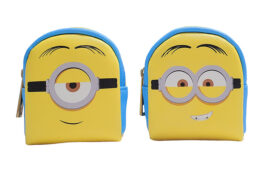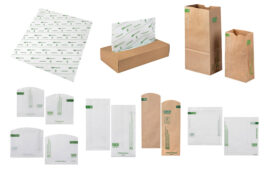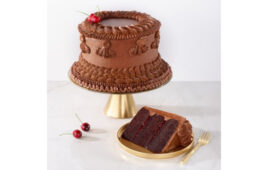Summer may be over, but ice cream sales aren’t going to chill out anytime soon. In fact, the entire ice cream and frozen novelty category will continue to boom, with convenience stores in position to capitalize the most, according to new research.
A study from Mintel International Group predicted that frozen novelties will enjoy the biggest growth in the matured ice cream market, though only two out of five consumers purchased novelty ice cream last year.
Mintel’s prediction has already come to pass at Quick Chek Food Stores in Whitehouse, N.J., said category manager June Connolly, whose company already sells more frozen novelties than ice cream.
“Ice cream is an indulgence, and novelties allow customers to indulge themselves quickly and cheaply,” said Connolly, who manages the ice cream and frozen novelty section at Quick Chek’s 105 stores in New York and New Jersey. “And ice cream novelties move faster because of their easy portability and low price points.”
Mintel research also indicated that the entire frozen market will grow 15% by 2012 through all retail channels, with 10.2% of that growth coming from frozen novelties alone.
“Ice cream remains among consumers favorite treats, and rapid new product development is giving consumers many new frozen novelty dessert choices,” said Mintel senior analyst David Morris, adding that the convenience of portability and the general consumer trend toward healthy eating trends is driving more people to frozen novelties to satisfy cravings.
A plethora of innovative new products has always been the key to drive excitement in the ice cream market, which experiences dramatic popularity shifts within the category. Though there are a variety of new tastes available today, including exotic fruit flavors like kiwi and mango, vanilla and chocolate remain consumers’ top two choices. And though the number of ice cream trucks, parlors and stands are dwindling, ice cream sales are as high as ever, with 80% of all ice cream being sold in convenience stores and supermarkets.
With 60% of total category sales, ice cream dominated the market in 2007, though sales were 3.9% lower than in 2002. Sales of frozen novelties grew 7.2% during the same period, with bite-sized, 100-calorie and personal-sized products attracting more consumers.
However, because the ice cream market is a mature one, growth for one marketer often comes at the expense of another, observed Packaged Facts researcher Cathy Minkler.
“This is particularly true with frozen novelties, where product life cycles are extremely short,” Minkler said. “Shoppers tend to browse shelves, actively on the lookout for new tastes, informative and exciting packaging, interesting product innovations or products offering a ‘surprise’ factor.”
Contradictory Market Trends
As the market grows, two contradictory consumer taste trends are appearing. The first is that consumers are beginning to seek out ice cream treats with fewer calories and less fat. The second is that higher-fat, super-premium treats are hitting the marketplace in a big way as well.
Health concerns are affecting ice cream sales in ways that wouldn’t have been considered just 10 years ago. For example, sales of soy-based ice cream are picking up. While these can broaden retailers’ consumer reach, marketers are finding that focusing less on the presence of soy and more on its overall health benefits is important to draw new customers to the soy marketplace.
New reduced-fat, fat-free, low-carb and even lactose-free ice cream products are also hitting retailers’ shelves. Products reflecting this trend include Kemp’s 100-calorie Minis, Unilever’s Breyer’s 100-calorie Ice Cream Cups and 60-calorie Dove Bar miniatures.
Despite a growing emphasis on more healthful eating, one thing Americans are definitely not willing to do is sacrifice flavor when making better food choices, the Mintel research noted. Gains in the ice cream and frozen novelty category have been influenced in part by population growth and inflation, but also by consumers’ desires for more gourmet—and therefore less healthful and more expensive—ice cream products.
Mike Thornbrugh, manager of public and government affairs for Tulsa, Okla.-based Quik Trip Inc., said he sees ice cream and frozen novelties growing at about the same rate.
“In the past they’ve always been quite stable sales for us, and they’re both still doing quite well,” Thornbrugh said.
Typically, the 500-store chain carries 12-15 different selections. “I’m not sure anyone really outsells the others,” Thornbrugh said. “People’s tastes change over time, and customers like to mix and match, if you will.”
Superpremium Novelties Arrive
In the gourmet trend, superpremium ice creams and frozen novelties—which have a much higher butterfat content but are favored more by those with gourmet tastes—are expanding market reach through the c-store channel as well.
For example, LaSalle Brands recently announced a major expansion of distribution of its best-selling packaged super-premium ice creams as well as the launch of a new line of super-premium ice cream novelty products priced at just 99 cents. LaSalle and other smaller regional brands are hooking up with larger distributors to compete with mega brands like Ben & Jerry’s and Haagen-Dazs, but they remain more economically priced. Whatever the outcome, experts say the results are likely to benefit retailers.
Industry growth at the retail level signals a major shift in consumer retail preferences, the Mintel study noted. Supermarket ice cream and frozen novelty sales are stagnating, while convenience store sales are moving forward.
“I believe my ice cream sales compared to the frozen novelties are about 50/50,” said Ben Graves, director of c-store operations for Rascals Convenience Stores in Batesville, Miss. “We do sell more frozen novelties than we did in the past, but my ice cream pint sales have been much stronger.”
Replay for Frozen Yogurt?
Although ice cream accounted for 59.2% (or $13.8 billion) of all U.S. frozen dessert sales in 2007, ice cream’s place at the dessert table dropped 0.3 percentage points from 2006. Sales likely went to frozen yogurt. Frozen yogurt’s 4.1% annual growth rate from 2003 to 2007 is the highest of all frozen desserts categories.
Mintel’s figures also showed nine out of every 10 people ate ice cream in the past year, but fewer than two in five bought sherbet or frozen yogurt.
Nonetheless, frozen yogurt, a hot sales trend during the 1980s and early 90s, appears to be making a strong comeback in California, which is often ahead of industry trends. 2007 sales there were up 12%. Unlike 20 years ago, manufacturers are aiming for younger consumers who want not merely a frozen dessert but a taste experience that’s new to them.
The result: Frozen yogurt is back to its roots as an acidic treat, rather than a substance pretending to be ice cream.
The fit for convenience stores may come on a market-by-market basis. “Frozen yogurt’s been around a long time, and honestly—especially when you get into single-serve stuff—people want the taste, and will spend money on what tastes good,” Quik Trip’s Thornbrugh said. “We don’t see much growth in the healthier choices.” CSD




